
Recent Blog Posts
April 20, 2013
The Anti-Oxidant Paradox and Its Implications for Interpreting Research

Antioxidant supplements continue to be touted by many fitness professionals as a nutritional panacea. In case you’re not aware, antioxidants are the body’s scavengers. They help to defend against damage caused by reactive oxygen species (ROS) — unstable molecules that can injure healthy cells and tissues — which are produced in abundance each day during the normal course of respiration. The main culprit: oxygen. Every time you breathe, oxygen uptake causes ROS production. Environmental factors such as pollutants, smoke and certain chemicals also contribute to their formation. Their production have been linked to a multitude of ailments including arthritis, cardiovascular disease, dementia and cancer. Not surprisingly, exercise is associated with substantially greater ROS production given that it substantially inreases oxygen consumption. This has led to the supposition that antioxidant supplements are especially beneficial for hardcore exercisers.
Here’s a short-course in how the process works: Your body is made up of billions of cells held together by a series of electronic bonds. These bonds are arranged in pairs so that one electron balances the other. However, in response to various occurrences (such as oxygen consumption), a molecule can lose one of its electron pairs making it an unstable free radical. The free radical then tries to replace its lost electron by stealing one from another molecule. This sets up a chain reaction where the second molecule becomes a free radical and destabilizes a third molecule, which becomes a free radical and destabilizes a fourth molecule and so on.
To prevent rampant ROS production, your body has a sophisticated internal antioxidant system. Various antioxidant enzymes combine with antioxidants from the foods you eat to help keep ROS at bay. There are dozens of known antioxidants including Vitamin C, Vitamin E, coenzyme Q10, alpha-lipoic acid, and carotenoids, amongst others. Although these nutrients are readily obtainable from food sources, it is often postulated that it’s virtually impossible to consume adequate quantities from your daily diet, thus making supplementation mandatory. In theory, supplementing with antioxidants would seemingly make sense since a greater availability should allow for greater protection against ROS. Question is, does theory translate into practice?
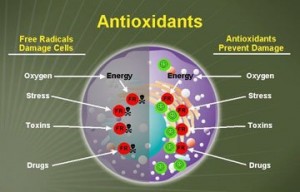
I first became interested about the topic a dozen or so years ago. A friend gave me a book to read called The Antioxidant Miracle, which as the title implies touted the wonders of antioxidant supplementation. The book piqued my curiousity. I delved into the research. Lo and behold, the claims seemed legit. A large number of studies showed positive effects of supplementation on a wide array of health-related benefits. What really caught my attention was a review by Dekkers et al. in the journal Sports Medicine, which discussed favorable results of antioxidant supplements during intense physical activity. The article went on to conclude that “human studies reviewed indicate that antioxidant vitamin supplementation can be recommended to individuals performing regular heavy exercise.” At the time, I wasn’t very savvy as to the complexities of research. I jumped on the antioxidant supplement bandwagon.
My bad.
Fast forward several years. Larger randomized controlled trials were conducted. The findings of these studies were at best decidedly mixed, with a majority showing no health-related benefits from supplementing with antioxidants. Alarmingly, several meta-analyses reported that there may even be an increased supplement-associated risk for cancer, stroke, and all-cause mortality. An objective evaluation of the current literature would make it difficult for even the most ardent antioxidant proponent to make a case for improving well-being by supplementation.
What’s particularly interesting to me as an exercise scientist is emerging research suggesting that antioxidant supplements may actually have a *detrimental* effect on training-related adaptations, particularly those associated with muscle hypertrophy. At issue here is the distinction between chronic versus acute ROS production. Evidence does show that chronically elevated levels of ROS can impair muscle function and even bring about muscle wasting conditions. Understand, however, that exercise upregulates the body’s antioxidant defenses. This ultimately helps to reduce chronic elevations in ROS without the need for supplementation.
On the other hand, acute production of ROS during a workout has been implicated in a variety of exercise-related adaptations including enhanced muscle remodeling. ROS production has been found to promote growth in both smooth muscle and cardiac muscle, lending credence to the supposition that these substances may have similar hypertrophic effects on skeletal muscle as well. The mechanisms have yet to be determined, but studies show that ROS can function as key cellular anabolic signaling molecules in the response to exercise. What’s more, there is evidence that they help to mediate the activity of satellite cells, which are responsible for aiding in repair and regeneration of muscle fibers. I have covered these topics extensively in my recent reviews of the roles of metabolic stress and muscle damage in exercise-induced muscle hypertrophy. By suppressing ROS production, antioxidant supplements may inhibit these hypertrophic effects and thus impair the growth and repair process. Indeed, preliminary studies indicate a negative impact of supplementation on exercise-induced adaptations.

There are a couple of take-home messages here, the most obvious of which is that the risk/reward ratio for antioxidant supplementation appears to be poor. Focus on eating a diet replete in vegetables and fruits and you’ll get all the antioxidants you need to support basic health. Overloading on antioxidants via supplements will not confer any additional benefits; it’s possible they may actually cause harm. And although the jury is still out, it is at least conceivable that supplementation can impede muscular development and other exercise-related adaptations. Any way you slice it, antioxidant supplementation doesn’t seem to make sense, at least for otherwise healthy individuals who exercise on a regular basis.
On a broader scale, the overriding message to be gleaned is the importance of using caution when interpreting research. This is particularly true of exercise-related studies, which are usually limited by small sample sizes, the inability to control for various confounders, and the almost unlimited number of variations that encompass exercise program design. All-too-often fitness professionals are quick to form opinions based on limited evidence. Such an approach is decidedly misguided and unscientific. As illustrated here, I was guilty of falling into this trap. Fortunately I learned from the mistake and as a result became a more astute fitness professional.
Extrapolating research findings in an evidence-based fashion can be equated to solving a jigsaw puzzle. Each published study is a piece to the puzzle. In almost every situation there will be conflicting results between studies. Sometimes two studies will report diametrically opposite findings on the same topic. How can you make sense of all this?
The best fitness professionals, guys like Bret Contreras, Alan Aragon, Joe Dowdell, and James Krieger, will weigh the body of evidence by considering factors such as the type of study (experimental vs. observational), the subjects (animal vs. human), and the setting (in vitro, ex vivo, in vivo, etc). They’ll also take into account numerous other factors including study design, statistical power, generalizability, and the quality of the journal in which the study was published. Only after a thorough analysis of the prevailing body of literature can an educated opinion be formed that guides decision-making and provides the basis for practical recommendations. It’s a skill that can be honed. The more research you read, the better you become at critical thinking, allowing you to piece together the puzzle in question.
One last thing: I frequently hear trainers and even researchers cite a study as “proof” of a given opinion. Not! A single study never “proves” anything. Rather, it simply lends support to a given theory. As noted, some studies carry more weight than others. The greater the strength of evidence, the more support there is for the theory. But theories are not set in stone. Case in point: Until recently, it was taken as gospel that saturated fat and cholesterol caused cardiovascular disease. Every nutrition text, bar none, stated such as fact. Recent research has now challenged these assumptions, however, suggesting that any relationship is far more complex than previously thought. Bottom line is that the more knowledge we acquire, the more we realize just how much more there is to learn.
Always be skeptical. Always be willing to change your opinion based on new information. This is what separates the ordinary practitioners from the elite.
Cheers!
Brad
March 5, 2011
5-Hour Energy Redux
About a year ago, I took the popular supplement, 5-Hour Energy, to task for making exaggerated advertising claims. In case you haven’t seen the ads, 5-Hour Energy is a liquid drink that promises to keep you alert and energetic for five hours without the dreaded “crash.” As I noted in the post, however, the product really doesn’t live up to the hype. The only ingredient listed on the label that has any efficacy as a pick-me-up is caffeine, and in this regard 5-Hour Energy is no better than a cup of brewed coffee.
Fast-forward to today. Consumer Reports, the consumer watchdog organization, recently did an expose on the product. Essentially, they came to the exact same conclusions as I did. The findings can be viewed on in an article on their website called Can 5-Hour Energy kick your afternoon slump?. Apparently the manufacturer wasn’t very cooperative with Consumer Reports (no surprise here), but they did provide a “study” that purportedly backs up their advertising claims. Unfortunately, the study was a self-funded research protocol that has not been published in a peer-reviewed journal. That’s not a study, it’s a propaganda piece. After reviewing the product’s ingredients, Consumer Reports summed up their findings with the following statement: “5-Hour Energy will probably chase away grogginess at least as well as a cup of coffee.” Not a ringing endorsement, to say the least.
Bottom line: Be an educated consumer. 5-Hour Energy costs about three bucks a pop. That adds up to over $1000 a year if you have just one drink a day. There are better ways to spend your hard-earned money. If you want a jolt of caffeine, brew a cup of coffee; it’ll cost you about ten cents. Clearly a much better bargain!
Stay Fit!
Brad
August 4, 2010
Consumer Labs Weighs in on Protein Powders
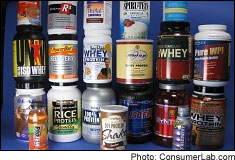
In a previous post, I wrote about the recent Consumer Reports study that found various protein supplements contained potentially unsafe levels of arsenic, cadmium, mercury, and lead. Now comes another study on the subject, this one conducted by Consumer Labs The following three products did not pass the Consumer Labs test:
1) Nature’s Plus Spiru-Tein Vanilla was found to contain 12 grams of sugar as opposed to 8 grams per serving claimed on the label. It also contained 26 more total calories per serving (125 calories versus the 99 claimed on the label), which was attributed to the increased carbohydrate content as well as some additional dietary fat.
2) NutriBiotic Rice Protein Vanilla was found to contain 6 mcg of lead per scoop (18 mcg in the maximum daily serving of 3 scoops) which is considered above tolerable limits.
3) Metagenics® UltraMeal® Rice Natural Chocolate Flavor was found to be contaminated with 5.9 mcg of lead per daily serving.
It should be noted that the products receiving a failing grade were all either soy or rice based, and high lead levels were found exclusively in the rice based proteins. This is understandable given that lead is known to accumulate in rice. All of the whey based protein powders were given “approved” ratings (although Consumer Labs did not test for levels of arsenic or cadmium, which were evaluated in the Consumer Reports study).
As always, remember that supplements are not regulated and quality can be spotty depending on the manufacturer. To help ensure that you get what you pay for, opt for brands that bear the that bear the “USP Verified” seal signifying independent testing for quality, purity, and potency.
Stay Fit!
Brad
June 22, 2010
Protein Drink Dangers?
I’ve received a flood of emails recently about a recent Consumer Reports study that found various protein supplements contained potentially unsafe levels of arsenic, cadmium, mercury, and lead. The story was picked up by CBS Early Show. You can view the CBS clip for yourself here:
embedded by Embedded Video
Before tackling the specifics of the Consumer Reports study, I feel compelled to address the spotty reporting done by CBS on the subject. First off, the hidden-camera footage of the individuals who work in supplement stores was patently disturbing. Clearly these people have no concept as to human physiology. But while this makes for good theater, should it really come as a surprise? The vast majority of supplement store workers are nothing more than low-paid clerks with no formal training in exercise or nutrition–certainly not the kind of individuals you’d want to seek out for advice on the efficacy of something you intend to put into your body. (Would you ask the secretary in your doctors office her opinion on whether or not you should take medication?).
Let’s get things straight: taking more protein than your body can utilize (generally about one gram per pound of body weight for someone who engages in intense strength training) will not result in any additional increases muscle mass. The human body cannot store excess protein for future use. Period. The moral of the story: don’t ask a store clerk for advice on supplementation–be an educated consumer and do your own research.
The CBS report also makes several unsupported claims that need clarification. For one, protein intake has not been shown to lead to dehydration. In a recent review on the subject, Martin and colleagues (2005) trace the genesis of this erroneous claim to an unsubstantiated extension of a 1954 review on nitrogen balance. Fact is, the belief has no credence. Current literature shows no evidence of dehydration associated with protein intake in healthy individuals. It’s an old-wives tale that needs to be put to rest.
Moreover, the claims that increased protein consumption heightens a person’s risk for osteoporosis are equally unsubstantiated. The overwhelming body of research shows that protein intake has no negative effects on bone loss (Spencer et al., 1988; Bonour, 2005). In fact, studies suggest that protein intake is actually positively correlated with bone mineral density of the femur, lumbar spine and distal radius (Cooper et al., 1996; Geinoz et al., 1993). I will elaborate on this subject in a future blog post but, in the meantime, read the referenced studies to form your own opinion.
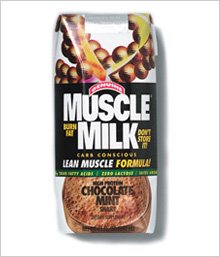
Okay, let’s move on to the Consumer Reports investigation into protein supplements. According to their tests, heavy metals were present in all 15 of the protein supplements evaluated. Three products–EAS Myoplex Original Rich Dark Chocolate Shake (ready-to-drink liquid formula), Muscle Milk Vanilla Crème, and Muscle Milk Chocolate powder–were found to exceed limits established by the United States Pharmacopeia (USP) in at least one of the metals. A fourth product, Muscle Milk Nutritional Shake Chocolate (ready-drink liquid formula), was found to approach the USP daily limit for arsenic.
Now before jumping to conclusions and swearing off consumption of any protein supplement, it should be noted that, in their written findings, the Consumer Reports team states the “concentrations in most products were relatively low.” It is only “when taking into account the large serving size suggested, the number of micrograms per day for a few of the products was high compared with most others tested.” Apparently the serving size alluded to here is three per day. While I’m sure there are some who do scarf down such hefty amounts of protein supplements, it is much more common to use them as a pre- or post-workout drink in a single daily serving. Thus, the conclusions drawn in the study seem to be misleading for a majority of protein supplement consumers.
Consumer Reports also did not disclose its testing methods used in the evaluation. Although Consumer Reports is generally regarded as a reputable organization, their lack of disclosure here does not allow interested parties to scrutinize the accuracy of their findings. As someone who serves as a reviewer for several peer-reviewed journals, I can tell you that such an omission would automatically preclude publication as a scientific study. Does this nullify the results of the tests? Certainly not. But it does raise a red flag and leave open the possibility that results may be flawed.
In case you dismiss such a possibility outright, I encourage you to read the Statement Regarding Consumer Reports Article on Protein Drinks issued by NSF International, a not-for-profit, non-governmental organization and leader in product certification for public health and safety. In their statement, NSF claims that the Consumer Reports study, “…omits critical information about the laboratory that performed the test and its accreditation qualifications. ISO 17025 accreditation is critical for any laboratory testing for heavy metals in dietary supplements and nutritional products.” Interestingly, testing carried out under NSF supervision found that, “Muscle Milk Chocolate and Muscle Milk Vanilla Crème have been certified to NSF/ANSI Standard 173. The samples analyzed met the maximum acceptable limits of the standard based upon our validated test methods.” Who is right here? Who knows? But the waters surrounding the topic have been muddied. Clearly more testing is needed to bear out the facts.
Still and all, it is hard to deny that the findings of the Consumer Reports study on protein supplements are alarming in the very least. More than anything, the study highlights the fact that the industry remains virtually unregulated. Unless and until a private organization decides to investigate a product’s ingredients, supplement manufacturers are basically left on their own to comply with proper standards. What to do? Your best bet to ensure quality is to look for supplements that bear the “USP Verified” seal. This shows that a product has met the scrutiny of the USP Dietary Supplement Verification Program, where supplements are tested for quality, purity, and potency. USP verification ensures that 1) products contain the ingredients listed on the label, in the declared potency and amounts; 2) do not contain harmful levels of specified contaminants; 3) will break down and release into the body within a specified amount of time; and 4) have been made according to FDA current GMPs using sanitary and well-controlled procedures. Submission to the USP program is voluntarily, and only a handful of companies choose to comply. You might pay a little more for those who do, but considering what’s at stake, it’s worth the peace of mind.
Stay Fit!
Brad
Bonjour JP. Dietary protein: an essential nutrient for bone health. (2005). J Am Coll Nutr. 24(6 Suppl):526S-36S.
Cooper C, Atkinson EJ, Hensrud DD, et al. (1996). Dietary protein intake and bone mass in women. Calcif Tissue Int. 58:320–5.
Geinoz G, Rapin CH, Rizzoli R, et al. (1993). Relationship between bone mineral density and dietary intakes in the elderly. Osteoporos Int. 3:242–8.
Martin WF, Armstrong LE, Rodriguez NR. Dietary protein intake and renal function. Nutr Metab (Lond). 2005 Sep 20;2:25
Spencer H, Kramer L, Osis D. (1988). Do protein and phosphorus cause calcium loss? J Nutr. 118(6):657-60.
June 2, 2010
Before and After Transformation Scams
One of the most popular advertising gimmicks associated with supplements and various fitness equipment products is the use of before and after transformation pictures. You’ve no doubt seen them. The “before” picture will show a person slouched, looking paunchy, no muscle definition, and usually sporting a frown to accentuate how unhappy he/she is with his/her physique. Then there’s the “after” photo where the individual has evidently transformed himself/herself into a lean, toned god/goddess, with a big smile to match how happy they are with their new body. The images are powerful. They’re enticing. They make you want to pick up the phone and order the product. Unfortunately, they are all-too-often scams. The “after” shots are augmented by shaving, spray-tanning, proper postural alignment and a healthy dose of Photoshop. Sometimes the photos are even taken on the same day, within mere minutes of each other!
Check out the video clip from the movie, Bigger, Stronger, Faster (which. if you haven’t yet seen it, is a really good movie, BTW) that exposes how many of these so-called “transformations” are done. It’s an enlightening video that should make you think twice before plunking down your hard-earned money for that magic supplement or fitness gizmo.
embedded by Embedded Video
May 31, 2010
5-Hour Energy?
If you’ve watched cable TV lately, you’ve likely seen the commercials for a product called 5-Hour Energy. The product promises “long-lasting energy without the crash.” It’s an intriguing claim. The question is, does it have any credence?
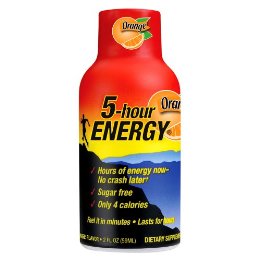
Like all of these types of products, 5-Hour Energy contains a “proprietary blend” of ingredients. This means the manufacturer doesn’t disclose the exact formula purported to produce results. Fair enough. A look at the ingredient list, however, does shed a good deal of light on the potential efficacy of the supplement.
On the plus side, 5-Hour Energy contains no sugar, supporting the claims that it won’t produce a crash. Consuming high levels of simple sugars causes hyperglycemia, which initiates an insulin spike to remove the excess sugar from circulation. This causes a rebound effect, where a hypoglycemic state is induced, resulting in lethargy. No sugar means no rebound effect and thus no crash. Unfortunately, though, that’s where the good news ends.
A major component of the supplement is a variety of B-vitamins, including vitamin B-3 (niacin), B-6, B-9 (folic acid), and B-12. The B-vitamins have a variety of functions in the body, including acting as co-factors in the production of energy. However, don’t be fooled into thinking that this means increasing B-vitamin consumption will increase energy levels. Provided you consume adequate amounts of B-vitamins (which is relatively easy to do as long as you eat a balanced diet), taking more confers no additional benefits with respect to energy production.
5-Hour Energy also contains an “energy blend” that includes citicoline, tyrosine, phenylalanine, taurine, malic acid, and glucuronolactone. While all of these ingredients have putative functions in supporting cognition, memory, mood, and other markers of mental well-being, they are obtained either through your diet or through normal bodily processes. Research into the advantages of supplementation have failed to show any clear benefits.
The primary component in 5-Hour Energy likely to give an energy boost is good old caffeine. According to the manufacturer, 5-Hour Energy contains as much caffeine as a cup of the leading premium coffee. And this is the rub: You can brew a cup of java for a fraction of the cost of the product and get essentially the same benefits. With this in mind, the decision becomes a no-brainer: don’t waste your money.
Stay Fit!
Brad
March 15, 2010
L-Carnitine: Help or Hype?
L-Carnitine has been a popular supplement in bodybuilding and weight loss circles for many years, and it has recently seen renewed interest from its inclusion in the many “energy drinks” on the market. That begs the question: are there any benefits to carnitine supplementation? To answer this question, let’s first start with a little physiology on the substance…
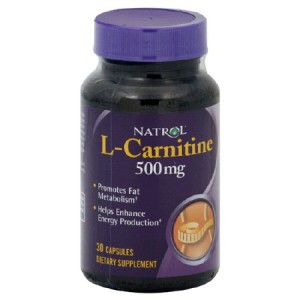
Carnitine is synthesized in the liver and kidneys from the essential amino acids lysine and methionine. It also can be obtained intact from whole foods such as avocados, red meat, and various dairy products. The primary function of carnitine is to transfer fatty acids across the mitochondrial membrane so they can be oxidized to produce energy. Thus, it is integrally involved in the fat burning process, as well as helping to enhance energy levels and reduce muscular fatigue.
From a hypothetical perspective, carnitine supplementation makes sense on the surface. First, because of its role in facilitating transport of fatty acids into the mitochondria (the body’s “cellular furnace”), an elevated level of carnitine would seem to permit a greater amount of fat to be burned by the body. In addition to accelerating weight loss, this would also help to spare muscle glycogen, thereby improving exercise performance. Moreover, since carnitine plays a role in buffering lactic acid, supplementing could theoretically prolong your ability to work out at intense levels. And carnitine has various cardiovascular benefits, including the reduction of blood cholesterol and lipids. All things considered, supplementation might sound like a good idea, right?
Unfortunately, theory doesn’t transfer into practice here. The vast majority of studies have shown little or no benefit of carnitine supplementation in healthy, well-nourished individuals. There appears to be a critical level for carnitine build up, above which it provides no additional effect. While supplementation does increase blood levels of carnitine, there is not a corresponding increase in transport of fats into the mitochondria, and thus fat burning capacity is not enhanced. Provided you take in sufficient dietary protein (equating to approximately one gram per pound of body weight), the overwhelming likelihood is that you will synthesize all the carnitine your body needs. And given that carnitine is quite expensive, supplementation just doesn’t provide a good cost/benefit.
The only instance where supplementation may be beneficial is if, by chance, you happen to have a carnitine deficiency. Those most at risk for being deficient include vegans, vegetarians, breast-feeding women, and individuals on very low calorie diets. Should you fall into one of these categories, it’s possible that carnitine can be of value. Standard dosage is to take between two and four grams of carnitine approximately one hour before exercise. Again, more is not better—once you reach the saturation point, any additional intake will be superfluous. And assuming you are not deficient (as is the case with the vast majority of the public), save your money.
Stay Fit!
Brad
January 19, 2010
Flax Oil vs. Fish Oil: Is There a Difference Between the Two?
It’s pretty much common knowledge by now that consumption of fish oil provides a wide range of health-related benefits. These benefits extend to almost every organ system imaginable and include the prevention of numerous disease states. There is even some evidence that fish oil aids in fat loss, helping to keep you lean by simply replacing other fats in the diet on a calorie-for-calorie basis (8). The body of research showing positive effects is so compelling that it seems almost too good to be true.
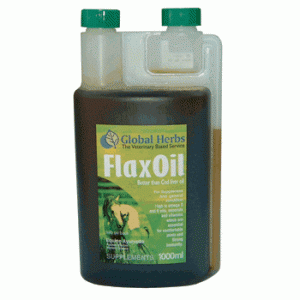
The benefits of fish oil can be traced to two compounds: eicosapentaenoic acid (EPA) and docosahexaenoic acid (DHA). Rather than bore you with technical details as to their mechanisms of action, I’ll just say that EPA and DHA regulate various genes in the body, particularly those involved in inflammatory processes and energy metabolism. The fat in certain fish species act as a storehouse of “preformed” EPA and DHA that is readily used by the human body after consumption. You can obtain these compounds by eating various cold water fish species (such as salmon, mackerel, and sardines), or by consuming fish oil supplements in either liquid or capsule form. Simple enough.
Some people, however, are averse to consuming fish and their oils. Vegetarians, in particular, fall into this category. Others simply don’t care for the taste of fish and find that supplements don’t digest well. So the question then arises whether a vegetable source is available that provides the same benefits as fish oil.
Flaxseed oil is often touted as a vegetable-based alternative to fish oil. Unlike fish oil, flax does not contain preformed EPA or DHA. Rather, it possesses a compound called alpha-linolenic acid (ALA) that can be converted to EPA and DHA in the body. This is where things start to get murky…
In order for conversion of ALA to take place, it must undergo a complex process that further “desaturates” the fatty acid and correspondingly forms longer chain polyunsaturated derivatives. Problem is, research shows that this conversion process is rather inefficient. A review article by Canadian researchers Mélanie Plourde and Stephen Cunnane (7) estimated that only 5% of ALA is converted to EPA and that less than 0.5% of ALA is converted to DHA.
With respect to EPA, the news is not as bad as it sounds. A recent study by Dr. Gwendolyn Barceló-Coblijn (3) and colleagues showed that consumption of 2.4 grams of flax oil increased EPA levels in red blood cells by 1.4-fold — an amount comparable to supplementation with 0.6 grams of fish oil (although less than that found with supplementation of 1.2 grams of fish oil). Similarly, a group of researchers at Emory University led by Dr. Charles Harper (5) found that supplementing with 3 grams of ALA derived from flax oil increased blood levels of EPA by 60%. However, neither study noted any changes in blood levels of DHA. This is significant in that DHA appears to be the more biologically important of the two. DHA is believed to be particularly necessary for brain function, as well as eye health. So the fact that ALA is poorly converted to DHA seemingly makes flax oil a poor substitute for fish oil.
Now before drawing any final conclusions on the matter, a couple of things need to be considered. First, none of the studies evaluated the subject’s consumption of omega-6 fats. Why is this relevant? Well, omega-6 fats compete with omega-3s for desaturation. If there is an abundance of omega-6s in the diet, then conversion of omega-3s will be reduced. And in the Western world, the average ratio of omega-6 to omega-3 is well in excess of 20:1! Thus, it’s possible that if you reduce the ratio to a more palatable 4:1, a greater DHA conversion would be seen.
What’s more, the studies in question looked at the levels of DHA in the plasma and red blood cells — not in specific tissues that require DHA. It is possible that tissues such as the brain, retina, and kidneys use ALA to manufacture DHA as needed, and this would not show up in tests of the blood.
What’s more, it is quite possible that ALA may confer other benefits over and above those found in EPA and DHA. Multiple studies have shown that consumption of ALA itself has cardioprotective effects (2, 4, 6). Further, as noted in the study by Barceló-Coblijn (3), ALA antagonizes the synthesis of arachidonic acid, which is a pro-inflammatory that can negatively impact the body. This alone may possibly aid in preventing various disease states.
Moreover, flax oil contains compounds called lignans that are not present in fish oil. Lignans have been shown to possess antioxidant properties and produce anti-estrogenic effects that may provide a host of additional health-related benefits, including a reduced risk of various cancers (1).
Bottom line: At this point it seems that fish oil probably contains unique properties that are not obtainable in flax. Therefore, until research shows otherwise, flax oil should not be considered a substitute for fish oil. However, flax may provide additional benefits over and above those found in fish oil, and could have an additive effect when the two are consumed in combination.
Stay Fit!
Brad
1. Adolphe JL, Whiting SJ, Juurlink BH, Thorpe LU, Alcorn J. Health effects with consumption of the flax lignan secoisolariciresinol diglucoside. Br J Nutr. :1-10.
2. Ascherio A, Rimm EB, Giovannucci EL, Spiegelman D, Stampfer M, Willett WC. Dietary fat and risk of coronary heart disease in men: cohort follow up study in the United States. BMJ1996;313:84–90.
3. Barceló-Coblijn G, Murphy EJ, Othman R, Moghadasian MH, Kashour T, Friel JK. Flaxseed oil and fish-oil capsule consumption alters human red blood cell n-3 fatty acid composition: a multiple-dosing trial comparing 2 sources of n-3 fatty acid. Am J Clin Nutr. 2008 Sep;88(3):801-9.
4. de Lorgeril M, Renaud S, Mamelle N, et al. Mediterranean alpha-linoleic acid-rich diet in secondary prevention of coronary heart disease. Lancet 1994;343:1454–9.
5. Harper CR, Edwards MJ, DeFilippis AP, Jacobson TA. Flaxseed oil increases the plasma concentrations of cardioprotective (n-3) fatty acids in humans. J Nutr. 2006 Jan;136(1):83-7.
6. Hu FB, Stampfer MJ, Manson JE, et al. Dietary intake of alpha-linoleic acid and risk of fatal ischemic heart disease among women. Am J Clin Nutr1999;69:890–7.
7. Plourde M, Cunnane SC. Extremely limited synthesis of long chain polyunsaturates in adults: implications for their dietary essentiality and use as supplements. Appl Physiol Nutr Metab. 2007 Aug;32(4):619-34
8. Schoenfeld, B. (2004) Omega-3 Fatty Acids: A Novel Fat Burner. Strength and Conditioning Journal, 26(3), 72–76
October 1, 2009
The Truth About Caffeine
If you listen to some health practitioners, you’d think that caffeine is an evil drug that contributes to a long list of diseases. Don’t believe it!
Much of the anti-caffeine bias is predicated on a few isolated research studies from many years ago, which suggested that caffeine consumption increased the risk of cancer. However, upon closer examination, these studies were found to have serious flaws in their design. Some were plagued by errors in statistical analysis while others used enormous quantities of caffeine—far beyond what the normal individual consumes. Sure, if you feed a rat the equivalent of 50 cups of coffee a day it can have a deleterious effect on health. But, this means little to the average person.
anti-caffeine bias is predicated on a few isolated research studies from many years ago, which suggested that caffeine consumption increased the risk of cancer. However, upon closer examination, these studies were found to have serious flaws in their design. Some were plagued by errors in statistical analysis while others used enormous quantities of caffeine—far beyond what the normal individual consumes. Sure, if you feed a rat the equivalent of 50 cups of coffee a day it can have a deleterious effect on health. But, this means little to the average person.
When all the available research data is taken into account, there’s really no evidence that modest caffeine consumption causes any detriments to overall well being. In fact, some studies have actually found a negative correlation between caffeine and certain forms of cancer! Perhaps this is due to the fact that coffee – the primary source of most people’s caffeine intake – is replete in antioxidants. Better yet, recent research indicates that coffee consumption can help to reduce cardiovascular events in those with diabetes and improve autonomic function.
For those who exercise, moderate caffeine consumption can actually help to expedite the loss of body fat. It exerts its effects by acting on the sympathetic nervous system to increase catecholamine (i.e. epinephrine and norepinephrine) production. Catecholamines facilitate the release of free fatty acids from fat cells, allowing fat to be utilized for short-term energy. By consuming caffeine before a workout, you can heighten this fat-burning effect while simultaneously improving exercise performance.
Now this isn’t to say you should load up on caffeinated beverages. Caffeine is a stimulant and, at high doses, can cause a host of unwanted side effects such as hypertension, nervousness, insomnia and gastrointestinal distress. But assuming consumption is limited to about 300 milligrams a day – which amounts to approximately two cups of brewed coffee – it poses no known health risks in otherwise healthy individuals (although it can be contraindicated in certain medical conditions and during pregnancy – check with your physician if there’s any concern). Just make sure to go easy on the cream and sugar though as they can easily offset the caffeine-induced increase in metabolic rate and have a negative impact on fat storage. As an alternative, consider using skim milk and artificial sweeteners as flavor enhancers.
For those who want a terrific alternative to coffee, consider herbal green tea. In addition to containing caffeine, green tea also has compounds called catechins that serve to further increase metabolism. Catechins inhibit an enzyme called catechol-O-methyl-transferase, which is responsible for degrading noradrenaline, a potent hormone that promotes the oxidation of body fat. In combination, caffeine and catechins act synergistically to enhance resting energy expenditure beyond what is achieved by caffeine alone. Considering that it also has an even greater amount of antioxidants than coffee, green tea is a terrific beverage for keeping your body in peak condition. There is even evidence that, because of its concentration of flavonoids, it helps to increase bone density and stave off cardiovascular disease. Does this sound like an evil drug?
Stay Fit!
Brad
September 3, 2009
Sports Drinks: Help or Hype?
When I’m in the gym, I invariably see people sipping sports drinks throughout their workouts. Problem is, most of these people are consuming the drinks for the wrong reasons.
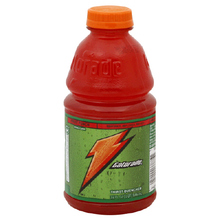
Sports drinks (such as Gatorade) serve two basic purposes. First, they help to replenish electrolytes (i.e. sodium, potassium, etc) that are lost in sweat during intense exercise. Second, they supply your body with carbohydrates, thereby promoting the restoration of glycogen to your muscles and liver which are used to fuel a workout. Sounds like something you’d want to take while training, right? Well, not necessarily…
Although electrolytes are depleted when you work out, these losses are usually insignificant in the short term. What’s more, electrolyte losses become even less of an issue as you gain experience with exercise. Over time, the body adapts to regimented exercise by conserving minerals. After a year or so of dedicated training, your initial sweat levels are mostly comprised of water, with only trace amounts of sodium and potassium excreted.
Moreover, sports drinks can be a detriment to those who are trying to lose or even maintain weight. Some of the popular sports drinks contain more than 200 calories per serving, predominantly in the form of simple carbohydrates. These extra calories really add up, counteracting a significant amount of the calories you burn during the workout.
So the decision as to whether or not to take a sports drink isn’t as clear cut as it first seems. In reality, it depends both on the scope of workout you’re performing as well as your goals. If you’re doing a standard workout of weight lifting and cardio that lasts about an hour, there’s little reason to consume a sports drink — particularly if your objective is to reduce body fat. Not only won’t it improve exercise performance, it will sabotage your attempts at improving body composition.
On the other hand, sports drinks can be beneficial during lengthy endurance events such as a marathon or a triathlon. When you engage in these types of long, drawn out exercise sessions (generally lasting more than two hours), sodium levels can drop precipitously, causing an electrolyte imbalance. Environmental factors, especially hot, humid climates, can exacerbate this situation. Glycogen levels can become exhausted as well, leading to a decrease in performance. So if you’re participating in such an event, judicious use of sports drinks is warranted.
Stay Fit!
Brad





 Entries (RSS)
Entries (RSS)



